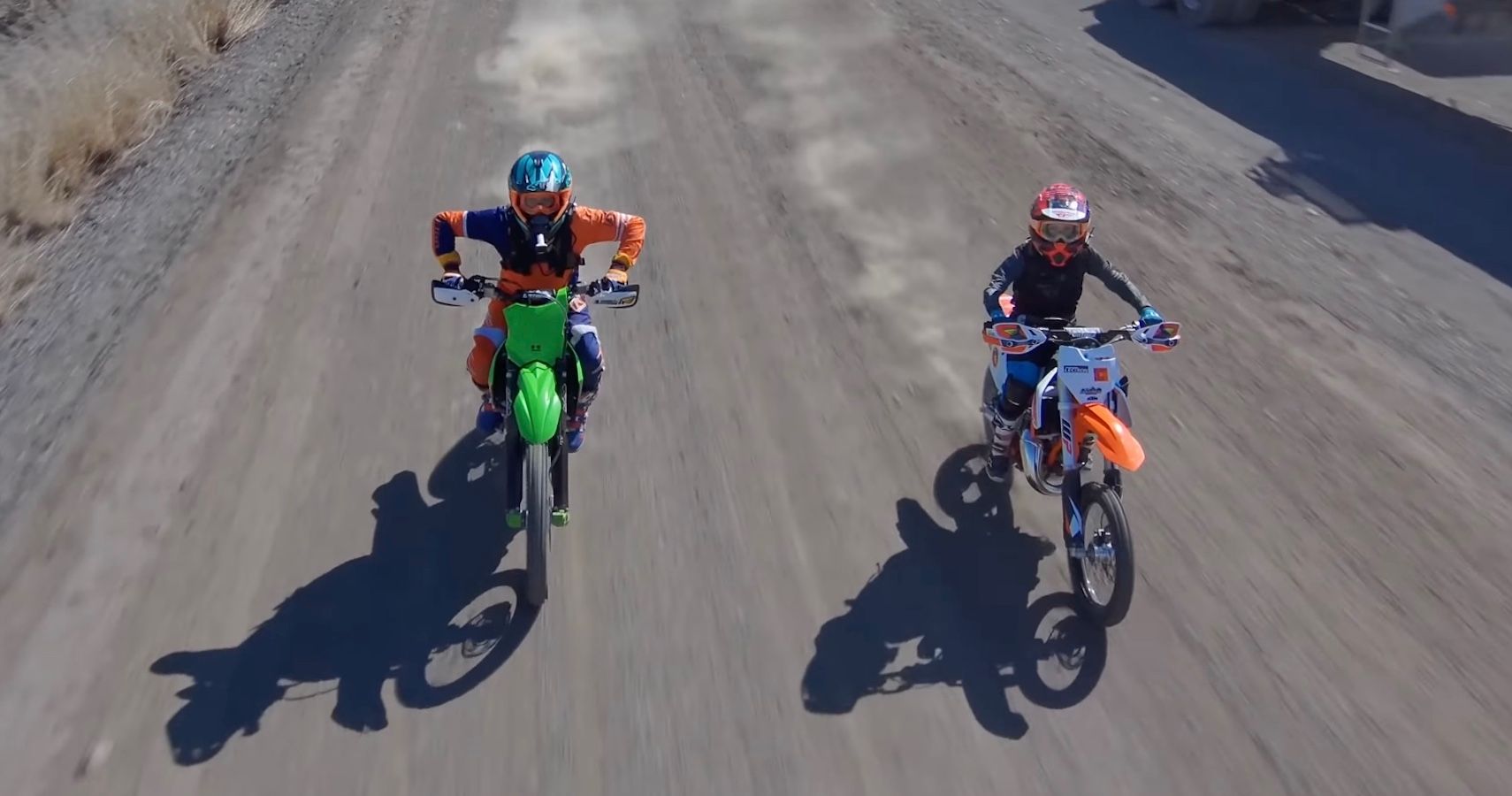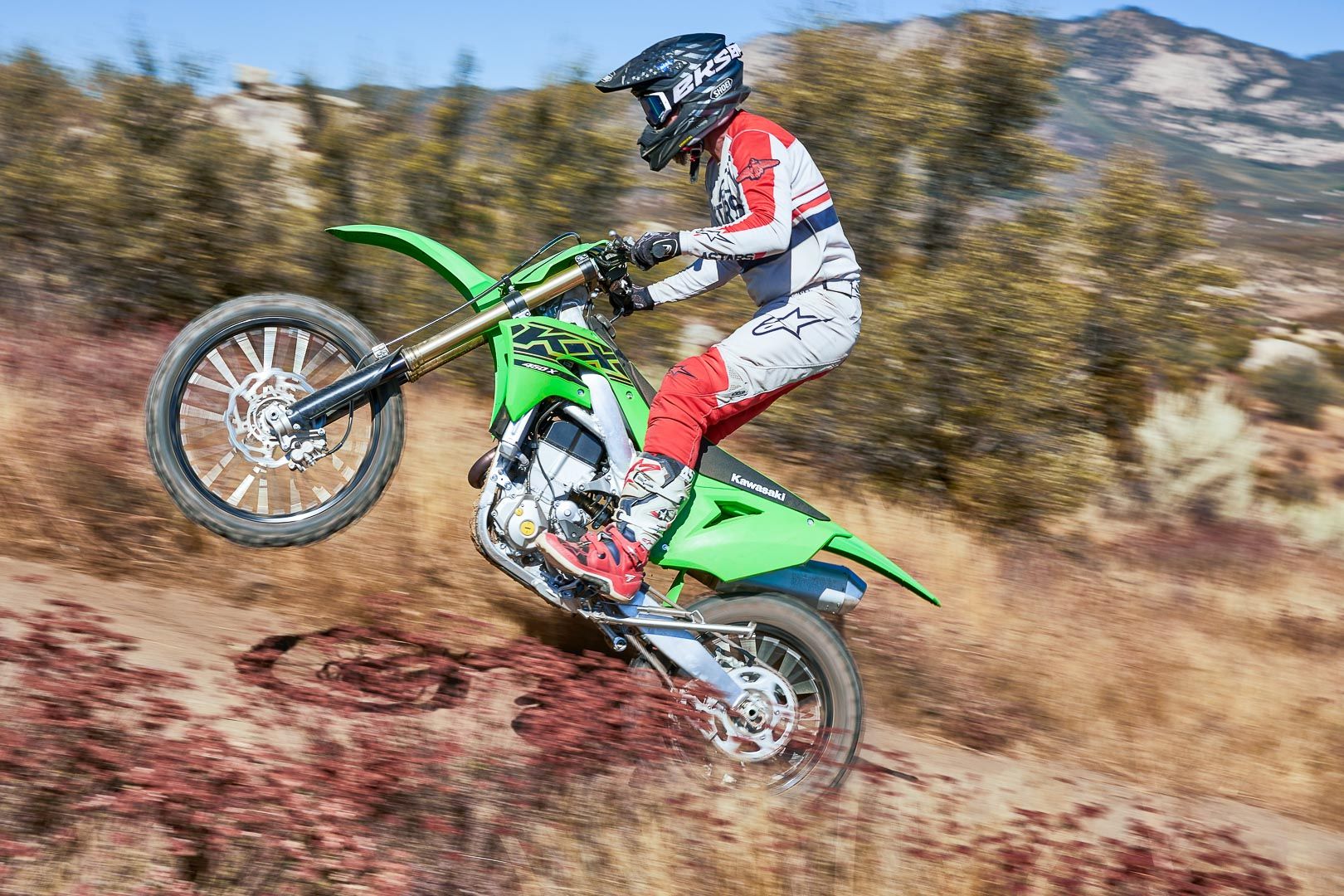It is an age-old debate in motorcycling: Are smaller two strokes faster than bigger four strokes? While many factors come into play beyond just the engine type and displacement, Kyle Brothersen, the host of the Dirt Bike Channel, set out to test this theory. Using a 2021 KTM 85SX and a 2021 Kawasaki KX250X, Kyle and his son grabbed all the throttle their bikes could muster to see which motorcycle had the higher top speed. In the end, the race came out as expected, but it was definitely closer than many would have predicted.
How Did The Two Stroke Fair Against The Four Stroke?
A discrepancy in the gearing was the impetus for the race. Annoyingly, the Kawasaki only has five gears, whereas the KTM has six, and while the 250 has better power off of the light, the extra gear in the 85cc KTM gave the Kawasaki a run for its money. Knowing the characteristics of each bike and in the interest of keeping the race fair, Kyle allowed his son to build up speed before launching the larger bike. This required a fair bit of practice, but once worked out, the two riders were able to approach top speed in near unison, making for a competitive race.
With the parameters in place, Kyle and his son let the dust fly and ran the bikes as hard as they could. Ultimately, when the two-stroke KTM was pinned, the four-stroke Kawasaki proved to have a little left in reserve and was able to pull away, but the formula of engines and gearing made for a closely contested race. In discussing the results, the host showed his cards a bit, voicing his frustration further with the five-speed gearbox in the Kawasaki, and rightly so. Given the prevalence of six-speeds, even in something as small as an 85cc dirt bike, few riders will be satisfied with anything less.
Different Strokes In The World Of Motorcycling
In late 1990s, this debate played out on the track as sanctioning bodies, based on environmental pressures, began introducing rules that allowed four strokes to compete alongside smaller two strokes. The smokier two strokes put up a good fight, but over time their four-stroke cousins became the favored platform for manufacturers. To put it simply, it became increasingly difficult for a two stroke to meet emissions standards in the consumer market, so racing the cleaner four strokes allowed for R&D that translated better to every day riding. The result has been fewer and fewer two stroke being built. So, while Kyle and his son were able to perform this race with current offerings, it may be increasingly difficult as two stroke motorcycles appear to be heading the way of the dinosaur.


